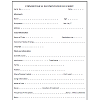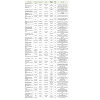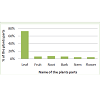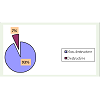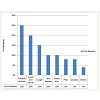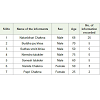A Survey of Traditional Health Remedies of theChakma Indigenous Community of Rangamati District, Bangladesh
Shaikh Bokhtear Uddin*Mohammad Omar Faruque and Shejoti Talukder
Corresponding author:Shaikh Bokhtear Uddin, Department of Botany, University of Chittagong, Chittagong-4331,Bangladesh,; E-mail: roben68@gmail.com
Department of Botany, University of Chittagong, Chittagong-4331, Bangladesh
Citation: Uddin SB, Faruque MO, Talukder S. A Survey of Traditional Health Remedies of the Chakma Indigenous Community of Rangamati District,Bangladesh. J Plant Sci Res. 2014;1(2): 106.
Copyright © 2014 Shaikh Bokhtear Uddin et al. This is an open access article distributed under the Creative Commons Attribution License, which permits unrestricted use, distribution, and reproduction in any medium, provided the original work is properly cited.
Journal of Plant Science & Research | ISSN: 2349-2805 | Volume: 1, Issue: 1
Submission: 27/01/2014; Accepted: 07/05/2014; Published: 12/05/2014
Reviewed & Approved by: Dr. Aniruddha Maity, Scientist, Division of Seed Technology, Indian Grassland and Fodder Research Institute, India
Abstract
Investigation and documentation of the status of medicinal plants and associated knowledge was conducted in Rangamati district of Bangladesh. Data was collected and evaluated with a questionnaire survey following semi- structured interviews, field interview, plant interview and group interview techniques. 50 medicinal plant species in 49 genera under 34 families were recorded which are used to treat 28 different ailments. Most frequently used family in context to the number of species used is Araceae. Mostly leaves are used for the preparation of herbal medicine. All the voucher specimen have been collected and preserved at the herbarium of Chittagong University(CTGUH).
Keywords: Chakma; Traditional knowledge; Healthcare; Rangamati and Bangladesh
Introduction
Evolution of human life and culture has directly or indirectly been related and influenced by surrounding environment. In the ancient period human being live closely associated with nature and depended on it for their survival especially indigenous communities. This dependency made them to acquire the knowledge of economic and medicinal properties of many plants. They gather knowledgefrom the nature, accumulated and enriched by selection and rejection and passed them from one generation to another, without any written documents. Many drugs that are on the market have come to us through folk use of plants by indigenous cultures [1].
In Bangladesh, 35 indigenous communities are living in different hilly areas and as well as in plain lands [2]. of them 12 indigenous communities are living in the Chittagong Hill Tracts [Rangamati, Khagrachari and Bandarban districts] viz: Bawm, Chak, Chakma, Khumi, Khyang, Lushai, Marma, Mro, Pangkhoa, Rakhaine, Tanchangya and Tripura [2]. In the present study ethnobotanical survey was conducted on Chakma indigenous community of Rangamati district. Chakma are the largest ethnic group in Bangladesh. They call themselves Chagmas or Changma. The Burmese and the Arkanies called them ‘Sak’, ‘Thak’ or Thek. They are short saturated with mongoloid features in their appearance. Chakma community has its own traditional system of herbal medicine for their primary healthcare and they are continuing. But lack of proper documentation, these traditional knowledge and the cultures of indigenous communities are rapidly changing and disappearing. So it is essential to document the information or many ethnobotanical knowledge of the area will be lost forever [2].
Documentation of the indigenous knowledge through ethnobotanical studies is important for the conservation and utilization of biological resources [3]. Therefore, establishment of the local names and indigenous uses of plants has significant potential societal benefits [4]. If a plant is used to treat the same disease in different places across the world then its pharmacological effect could be accepted and represents a vital source for new drug development. Therefore, it is suggested that such studies may contribute to indigenous ethnobotanical knowledge as well as studies of the sourcing of raw materials for development of commercial pharmaceuticals [5]. In the present study, data has been collected from different areas of Rangamati district through repeated field trips. Therefore, the aim of the present study is to document the information of plant use for various purposes especially for medicine from the Chakma community of Rangamati district, Bangladesh and to gain knowledge and develop appropriate scientific base for their economic development without disturbing their natural habitat and culture. Notable contributors were made by different workers in the field of ethnobotany from different parts of Bangladesh. Viz: [6-28].
Methods of Study
Successful ethno botanical documentation depends on the cooperative venture between the researcher and local informants. It is very important to locate knowledgeable informants for the study of ethnobotany [29]. For the selection of study sites, initial contacts are very important to obtain an idea about the area and the people. An important group of people are those who can be helpful at the initial stages, Such people include Forest department staff, headman of the area, agricultural scientists, local public, teachers and students of the School and college.
There are various sampling methods recommended for ethnobotanical study, such as- i) Direct or participant observation, ii) Checklist interview, iii) Group interview iv) Field interview, v) Plant interview, vi) Market survey [30-32].
In present study, data have been collected in the field following group interview, field interview and plant interview techniques. During the interview, the information has been noted in the documentation data sheet along with their scientific name, local name, Chakma name, family, plant parts used, illness treated and using information. Audio recording has been done with a digital voice recorder.
1. Group interview
In group interviews the ethnobotanist conducts interviews with several informants at a time. Apart from being very difficult to organize a group of practicing herbalists (‘Baiddya’) from several different areas of CHT due to the poor communication system.
2. Field interview
This is also referred to as a ‘bagging interview’ [30]. The field interview consists of walking in one or more vegetation zones with an informant, collecting and taking notes on plants and their uses. The plants are shown to the researcher by the informants who described its use. The advantages of the field interviews include the facts that informants get to see the plants in their natural state, thus minimizing the risk of misidentification, and that the context of the interviewitself can lead to the discovery and discussion of new important questions [31].
3. Plant interview
In a variation of the field interview technique, plants can be collected in the field, brought back to the village, and presented to informants [30]. Data about the plant uses can then be obtained. This method is known as the ‘Plant Interview’ technique.
The first step was to contact the headman (as Chairman) and karbari who were considered as the best informant and most influential person of the tribal communities in his area and to ask their help to find the herbalists who have knowledge of medicinal plant uses and regarded as professional practitioners in the area. Before selecting the herbalist’s local people of that area were also consulted. With satisfactory information about the informants seven herbalists havebeen selected. Some students from indigenous communities who are studying at Chittagong University were also helped to select and make the initial contacts with the informants. Several sites from the study area have been randomly selected according to informants’ consensus and visited to collect the voucher specimens and information of plant.
The plant interview technique has been also used to obtain medicinal plant use information. Where informants were too busy or too old to accompany the author to the field, that technique has been used and freshly collected plants have been brought to the informants. From these collections the informants identified some of the plants by their local name and described their use. These conversationshave also been documented and recorded with the help of a voice recorder. This method is less time consuming than field interviews and the plant interview allows more informants to be included in a given period of time [31]. One disadvantage of the technique is that small sections of large shrubs and trees may not be readily identifiable by informants, who often rely on such morphological, architectural, or ecological characters as plant height, crown shape, branching pattern and habitat for positive identification. One technique adopted to overcome the problem was to present colour photographs of the plants when available.
The group interviews techniques have also been used to collected information from several informants at a time. One disadvantage that the herbalists are secretive in the presence of other herbalists. They believe that if they share knowledge with other herbalists, they may lose economically in their profession.
The interview is a dynamic process involving spoken interactions between two or more people. Its value as a tool of inquiry depends on the context in which it takes place and on the interviewer’s skills [31]. Ethnobotanical information was obtained through informal interviews conducted during the same period with knowledgeable individual’s particularly elderly man and women. All of the people that were interviewed belong to the lower income group and do not have particular jobs, but carry out different kinds of work throughout the year: cattle ranching, laying bricks, selling plants, etc. Several techniques have been used for interviewing to gather ethnobotanical data: Mostly Semi structured and Open- ended interview techniques have been adopted. A documentation data sheet has been prepared based on Alam [32], Alcorn [30], Cotton [33] and Martin [34] (Figure 1).
All voucher specimens have been collected during documentation and preserved at the Chittagong University Herbarium (CTGUH). Voucher number has attributed at the end of each species name within the bracket (Table 1). The specimens have been identified consulting with the experts, through several herbarium studies by comparing herbarium specimens and studying available literatures. The description and the current nomenclature have been compared with recent book-“Dictionary of Plant Names of Bangladesh [20].
Results and Discussion
The investigation and documentation of the knowledge of herbal practice was conducted from the Chakma indigenous community of Rangamati district of Bangladesh. A total of 50 plant species in 49 genera under 34 families were documented. Most frequently used family in context to the number of species is Araceae followed byEuphorbiaceae, Acanthaceae, Verbenaceae, Liliaceae, Amaranthaceae, Convolvulaceae, Fabaceae and Apocynaceae respectively.
Among the 50 plants species, the most utilized plant parts for the preparation of herbal medicine is leaf, which is, 73% followed by fruit 6%, Root 7%, bark 6%, stem 4% and flower 4% respectively (Figure 2). When root and the whole plant are used for the preparation of herbal medicine, are considered as the destructive way of using plants because it needs to destroy/uproot the whole plant. But leaf, fruit, flower or other aerial parts can be used without destroying the whole plant. So, using the plant parts without destroying the whole plant is a significant way to conserve them.
By analyzing the ethnobotanical data, it was observed that the Chakma are conservative in plant use and they have the knowledge of sustainable use of plants. Because most frequently utilized plant’s part is leaf (73%) for the preparation of herbal medicine, which is a non-destructive way of use. Moreover, it refers that leaves in many species may store high concentration of bioactive compounds [35]. In addition it is easy to collect, store, transport, and help the species in conserving it without destroying the plants. The percentage of destructive and non-destructive way of plant use is shown in Figure 3.
A total of 28 diseases/ illness were documented, which resulted Fracture 25%, Tumor or cancer 20%, cough 15%, skin disease 10%, snake bite 10%, piles 8%, jaundice 8%, Harnia 4% (Figure 4).
The most frequent citied modes of preparation were extract, paste, juice and infusion respectively. As far as the techniques of preparation of medicine are concerned, these do not resemble those specified in present day organized pharmaceuticals practices. In some preparations, households, utensils (cup, knife, pot) and naturally available materials (sticks, pieces of stone etc.) have been used.
The dose and duration of application of these medicinal preparations are varied from informant to informant. Most of the cases they were took one to three teaspoonfuls extract, occasionally they were took a glass or one cupful. Time and duration is also varied, most frequently extract was took for one to three days. In case of some complicated diseases/illness, the duration may be longer.
The informants in the present study are within 25 to 75 years old (Table 2). During the survey, most of the information documented from the male informants. The percentage of male is 71% and the female is 29%. The present study revealed that only one healer was below 50 years (Table 2). The present generation lost the interest to continue their parental profession because it does not provide them proper financial support to their livelihood (Uddin, 2010) and the older practitioners die without passing their specialist knowledge. This knowledge, however, is dwindling rapidly due to movement towards a more modern lifestyle, agricultural practices, cultural changes within the community, housing colonies, and education system. These changes are leading to not only the destruction of habitats of medicinal plants but also the declining of traditional knowledge and medicinal plant species in the area. Similarly, the threat to traditional knowledge observed in other parts of the world [36] is also due to a lack of interest of the younger generation.
The Rangamati district is rich in biodiversity, and to conserve this it is necessary to create public awareness about conservation of wild ethnobotanical plants. It is suggested that- 1) collection should be made by trained and experienced plant collectors who can identify the ethnobotanical plants properly and aware of preservation of plants and their plant parts. 2) During the collection of leaves, flowers and fruits, the whole plant should not be uprooted. 3) A completeban by the proper authorities should be imposed on the collection of rare and endangered species and 4) Research institutes and university researchers should carry out research on these species to conserve and improve their genetic constitutions. 5) Local people’s knowledge should be associated to prepare a conservation strategy. In addition, attempts must be made to encourage the documentation of plants so they are readily accessible to a larger number of the populace.
Acknowledgement
The authors express their deep sense of gratitude to the informantsand the Bengali men and women who helped in different ways during the field work.
References
- Prance GT (1995) Introduction. In: Chadwick, J & J. Marsh (eds.) Ethnobotany and the Search for New Drugs 1-3. John Wiley Sons. England.
- Uddin SB (2010) Medicinal Plants Database of Bangladesh.
- Muthu C, Ayyanar M, Raja N, Ignacimuthu S (2006) Medicinal plants used by traditional healers in Kancheepuram district of Tamil Nadu, India. J Ethnobiol Ethnomed 2: 43.
- Bagci Y (2000) Ethnobotanical features of Aladaglar (Yahyali, Kayseri) and its vicinity. The Herb Journal of Systematic Botany 7: 89-94.
- Cakilcioglu U, Turkoglu I (2010) An ethnobotanical survey of medicinal plants in Sivrice (Elazig- Turkey). J Ethnopharmacology 132: 165-175.
- Anisuzzaman MA, Rahman HMM, Harun-Or-Rashid M, Naderuzzaman ATM, Islam AKMR (2007) An Ethnobotanical Study of Madhupur, Tangail. Journal of Applied Sciences Research 3: 519-530.
- Chakma S (1992) Chakma Parichiti. Bangang Publication, Rangamati, Bangladesh.
- Chakma GB (1993a) Local Government Parishad of the Hill Tracts in Historical Prospect (In Bengali). Tribal Cultural Institute, Rangamati, Bangladesh.
- Chakma S (1993b) Parbattya Chattagramer Upajati O Sanskriti. Tribal Officers Colony Rangamati, Bangladesh.
- Gain P (2000) Life and nature at risk. In: Gain P (ed.). The Chittagong Hill Tracts. Life and Nature at Risk. Society for Environment and Human Development, Dhaka, Bangladesh. 121.
- 11.Hassan MA, Khan MS (1996) Ethnobotanical records in Bangladesh. Plants use for healing fractured bones. J Asiatic Soc Bangladesh (Sci) 12: 33-39.
- Khan MS, Hassan MA, Uddin MV (2002) Ethnobotanical Survey in Rema Kelanga Wildlife Sanctuary (Habigang) in Bangladesh. Bangladesh J Plant Taxon 9: 51-60.
- Millat-e-Mustafa M, Begeum K, Al-Amin M, Alam SM (2001) Medicinal plant resources of the traditional homegradens in Bangladesh. Trop Med Plant 2: 1.
- Pasha MK, Uddin SB (2013) Dictionary of Plant Names of Bangladesh. Janokalyan Prokashani. Chittagong. Bangladesh. 1-434.
- Rahman MA (1997) Tribal Knowledge of Plant use in Hill, Tracts district of Bangladesh. Biodiversity Newsletter Bangladesh 1: 1.
- Rahman MA (1999) Ethno-medico-botanical knowledge among tribals of Bangladesh. Econ Taxon Bot 23: 89-93.
- Rahman MA, Uddin SB (1998) Some anti rheumatic plants used by tribal people of Hill tracts districts of Bangladesh. Biodiversity Newsletter of Bangladesh, 2: 4.
- Rahman MA, Uddin SB, Wilcock CC (2003) Indigenous knowledge of herbal Medicine in Bangladesh diarrhea, dysentery, indigestion and stomach pains. J of Med and Aroma plant Scie 25: 1001-1009.
- Rahman MA, Uddin SB, Khisa A, Wilcock CC (2000) Indigenous knowledge of plant use in a Hill Tracts tribal community and its role in sustainable development.
- Rahman MA, Uddin SB, Wilcock CC (2007) Medicinal Plants used by Chakma tribe in Tracts districts of Bangladesh. Indian Journal of Traditional Knowledge. 6: 508-517.
- Rajput AB (1965) The Tribes of Chittagong Hill Tracts. The Inter Services Press Ltd. Karachi (Pakistan).
- Rao NR, Henry NA (1996) The ethnobotany of Eastern Ghats in Andhra Pradesh, India. Botanical survey of India. P: 1-2.
- Tripura SL (1994) Parbattya Chattagramer Prakiiti O Sanskriti (in Bengali). Rakhaing Cultural Institute, Rangamati, Bangladesh.
- Uddin SB (2001) A comparative ethnobotanical study among the tribal communities of Chittagong hill tracts districts, Bangladesh (PhD thesis).
- Uddin SB, Rahman MA, Uddin MG, Pasha MK (2008) Ethnobotanical Use of Pteridophytes from Chittagong Hill Tracts of Bangladesh. Nepal J Plant Sci 2: 89-93..
- Uddin SB, Ratna RS, Faruque MO (2013) Ethnobotanical Study on Medicinal Plants of Rakhaing Indigenous Community of Cox’s Bazar District of Bangladesh. Journal of Pharmacognosy and Phytochemistry. 2: 164-174.
- Yusuf M, Chowdhury JU, Wahab MA, Begum J (1994) Medicinal Plants of Bangladesh. Bangladesh Council of Scientific and Industrial Research, Dhaka 1205. Bangladesh.
- Yusuf M, Begum J, Hoque MN, Chowdhury JU (2009) Medicinal Plants of Bangladesh. BCSIR, Chittagong. 794.
- Given D R, Harris W (1994) Techniques and methods of ethnobotany as an aid to the study, evaluation, conservation and sustainable use of biodiversity. Commonwealth Secretariat, London.
- Alcorn JB (1984) Huastec Mayan Ethnobotany. University of Texas Pressâ€-Austin.
- Alexiades MN, Sheldon JW ( (1996). Selected Guidelines for Ethnobotanical Research: A Field Manual. The New York Botanical Garden, Bronx, New York. 306.
- Alam MK, Banik RL, Pei SJ, (1998) Applied Ethnobotany. Proceedings of Subregional Training Workshop on Applied Ethnobotany. BFRI, Chittagong, Bangladesh 17-22.
- Cotton CM (1996) Ethnobotany, Principals and Application. John Wiley and Sons Ltd. 424.
- Martin G J (1995) Ethnobotany: A methods manual. Chapman & Hall, London.
- Martin G (1992) Searching for plants in peasant marketplaces. In: Plotkin, M. &L. Fumolare (eds.) Sustainable harvest and marketing of rain forest products. Island Press, Washington D. C. 212-223.
- Panghal M, Arya V, Yadav S, Kumar S, Yadav JP (2010) Indigenous knowledge of medicinal plants used by Saperas community of Khetawas, Jhajjar District, Haryana, India. J Ethnobiol Ethnomed 6: 4.

